Parasol Mushroom / Summer / Autumn / Edible
Lets take a look at the Parasol Mushroom, a wonderful and delightful edible mushroom to include in our everyday dishes
Scientific Name
Macrolepiota Procera
Common Names
Parasol Mushroom, Snakeskin Parasol, Snakes Hat, Drumstick Mushroom.
Family
Agaricaceae
Habitat
They are saprobic, most often found growing in grassy areas near trees. They also appear in meadows, sand dunes and on disturbed ground.
Description
An easy to identify mushroom, they can sometimes be found in large troops and can be up to 50 cm across individually.
Identifying Features:
Cap:
Tan to light brown in colour. When young they are almost round or bulbous and flatten out to become parasol shaped as they grow. At this young stage they can look similar to some species of Amanita. The caps are large, up to 50 cm across when fully grown. They develop a scaly surface, with a prominent central umbo as they mature. The flesh sometimes goes pinkish when cut.
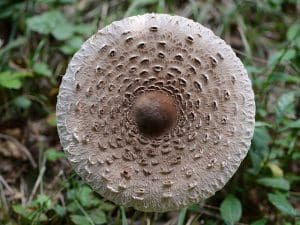
Stem:
White to cream in colour. It’s long (up to 30cm) and fibrous and quite often becomes hollow when fully grown. The stems have a ‘snake skin’ pattern of brown scales that appear in bands. They have a large, bulbous base. Towards the top of the stem there is a large, tough, double ring that you should be able to move up and down without it breaking.
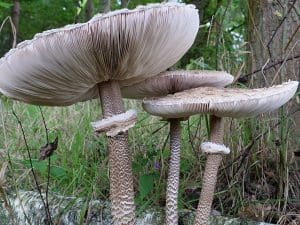
Gills:
The gills are white when young, darkening slightly with age, they are crowded and are clearly free from the stem.
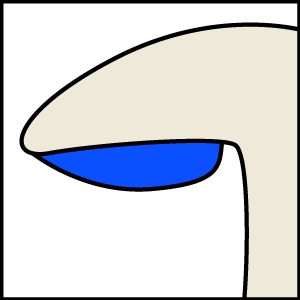
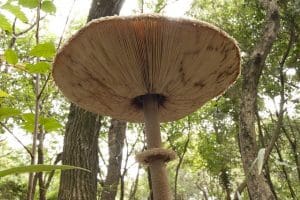
Smell:
Mushroomy, slightly nutty.
Spores:
White to pale cream.
Uses
In food
They have a lovely mushroomy flavour, quite similar to shop bought Agarics and they work well in most dishes. The stems can get tough with age so are often discarded or used for soups and stocks.
The large caps are delicious dipped in flour, egg and breadcrumbs and fried like a cutlet or schnitzel.
The small, still round caps are nice stuffed with minced pork, fennel and herbs, then baked, a bit like a stuffed pepper.
They can also be eaten raw, sliced thinly and seasoned with salt, pepper, lemon juice and olive oil they make an interesting vegan carpaccio alternative.
Harvesting
The younger caps can look very similar to young Amanitas as they both start from an egg sack. So extra care should be taken. When they are fully grown they do unfortunately tend to be quite maggoty. ‘Drumstick’ to just ‘opened umbrella’ are the best ones to collect.
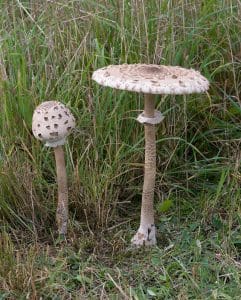
Known hazards
None Known.
Potential lookalikes
When they are fully grown there aren’t too many lookalikes, few other mushrooms will get to 50 cm in size. Other Lepiota species can look similar but they will never get larger than 15cm across the cap. The Shaggy Parasol (Lepiota Rhacodes) also looks similar but this tends to be slightly smaller, lacks the ‘snake skin’ pattern on the stem and will stain red when cut. The Shaggy is edible for most people but has been known to cause stomach upsets in others.
Extra Notes
The ‘Procera’ part of their name means ‘tall’ which is very apt, the stems often reach up to 30cm in length.



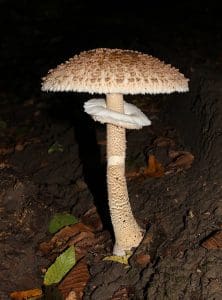
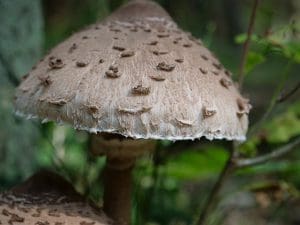



Leave a Reply
You must be logged in to post a comment.